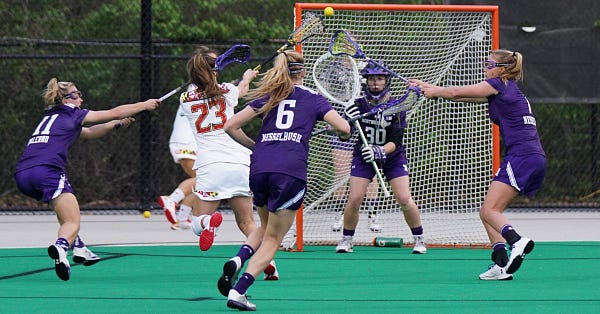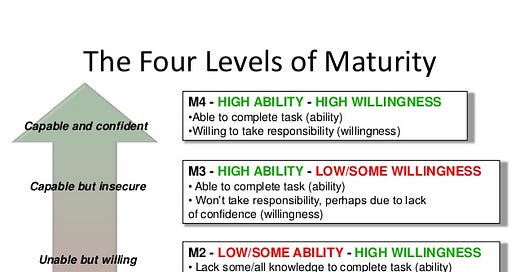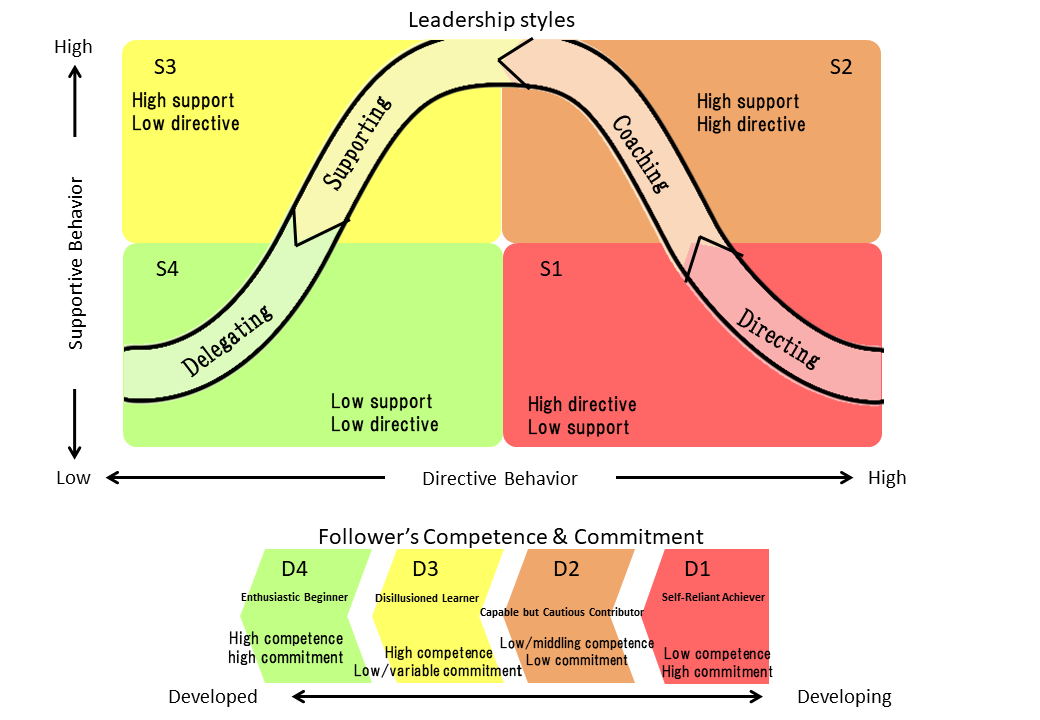WN#24: Coaching Your Team and Adapting Your Leadership
Before ending the year, I will share Leadership, New Year’s resolutions, a story about loss and healing, tips for tech hiring interviews, and more. I wish you a great New Year! 🎊
Hello! Late, but here it is, the 24th issue number of the newsletter. I didn’t want to miss the opportunity to wish you a great end of the year, and the best new year 2021 possible.
I also hope you had a blast on Christmas with your family and friends. In my case, I was lockdown with my family, and we weren’t able to meet more people. Not bad, just a different experience.
So, this is the last newsletter of the year! When I first decided to join this writing trend, I never expected to reach 24 issues at the end of the year.
Who knows how much more newsletters will come, but as long as I use it to learn new topics, and as long as you find something interesting or useful in them, I will keep on writing.
In my last session with the coach, among other topics, he introduced me to the Situational Leadership theory. This will be today’s leading topic. Also, I read about the need for coaching in leadership, so I mixed it. I hope you find it interesting.
By the way, as my sessions with the coach are arriving at an end, I must admit how interesting and useful it is to ask for some help, receiving guidance, or at least for someone to listen to one’s trash. A coach is a facilitator and guide; I arrived at the conclusions, but he helped reach them, making the right questions.
So, this week you’ll find Leadership, New Year’s resolutions, a story about loss and healing, tips for tech hiring interviews, and many other exciting tweets. I hope you find anything interesting in this week’s selection.
As I always end this introduction, please, do not hesitate to add your comments or share your feedback. One of my goals is to learn from you. And if you like it, please share it. The more we are, the more we will share and have fun.
Hope to see you next year!! Thanks for reading it, and stay safe!
⚙️ Coaching and Situational Leadership
If you were asked which leadership style was the best, what would you answer?
I already looked for an answer to this question in a post about leadership styles months ago. And this was one of the multiple questions that my coach asked me in my previous session with him.
The answer wasn't one of them, but all. The trick is that we may adapt our leadership based on the situation and the people we have.
This question was the preparation for a knowledge pill based on Situational Leadership, an adaptive leadership style that identifies a leadership style based on the person's maturity or development.
But this is not only about having the flexibility to adapt our leadership style. Knowing our team, and showing the proper skills based on its maturity, imply that our success as managers is linked to our ability to coach our teams.
Leading as a Coach
And this is the main topic from The Leader as a Coach. In this article, Herminia Ibarra and Anne Scoular wrote about the twenty-first-century managers that simply don’t (and can’t!) have all the right answers. Being a manager is a role that is becoming like a coach.
But what means being a coach? Mainly, it is about engaging in with all their people all the time, in ways that help define the organization’s culture and advance its mission. As a coach, we need to help ensure that the people move forward aligned with the cultural values and the mission.
And how could we do it? In general, we could ask questions instead of providing answers, support employees instead of judging them, and facilitate their development instead of dictating what has to be done. It will always depend on what is needed in a given situation with any single person. There will be moments where dictating will be required, and so asking questions.
It doesn’t seem complicated, but it is, and it’s also a huge shift. Management is usually unenthusiastic about coaching, and studies have shown that people usually think they are good at it, but they don’t.
A classical case of study at executive training is to play the role of a manager who must decide whether to fire or coach a direct report that is not performing up to par. Nine of ten decide to coach. We all know the answer, even when we don’t lead by example.
But when it comes time to play, people demonstrate much room for improvement. People know what they’re supposed to do, but it doesn’t come naturally because they aren’t used to it.
Styles of Coaching
In the same article, Herminia and Anne presented the following 2x2 axis with one axis showing the information, advice, or expertise that a coach puts into the relationship with the person being coached, and the other showing the motivational energy that a coach pulls out by unlocking that person’s own insights and solutions.
Directive coaching: This is mentoring. It needs more telling than asking.
Laissez-faire coaching: Probably anti-coaching, when everybody knows what to do, and the best way is to leave them alone doing
Non-directive coaching: This means listening and questioning. The coach is a facilitator and helps with problem-solving.
Situational coaching: A combination of others. This is where all the coaches should aspire to arrive, striking a fine balance between directive and non-directive styles according to the moment's specific needs.
The article also introduces other interesting points, like the GROW coaching model, especially for non-directive coaching. I encourage you to read it.
Situational Leadership
Returning to the original topic, situational leadership strategy encourages leaders to take stock of their team members, weigh the many variables in their workplace, and choose the leadership style that best fits their goals and circumstances.
There isn't a uniform leadership style that works for everyone all the time. You may need to adjust your style based on the people you're managing, the context in which you're leading, or the external pressures you're under.
According to STU university, there are two models for Situational or Adaptative Leadership, the one described by Daniel Goleman and another by Ken Blanchard and Paul Hershey.
In this newsletter, I am going to focus on the second. I also mentioned Goleman's in my blog post. You could find below a summary of the Six leadership Styles he proposed.
The Situational Leadership Model has two fundamental concepts: leadership style and the individual or group's performance readiness level, also referred to as maturity level or development level.
The Maturity
There are two variables to consider when measuring Maturity: ability and willingness. Ability is related to our capacity to do a task, and willingness has to do with attitude.
There are two characteristics to consider also when measuring Maturity:
It is relative: one person can be mature regarding a concrete task, but not to others.
It is dynamic: It is measured on a concrete moment, that can't be different on the following.
Based on the ability/willingness, they identified four levels of Maturity (M1 to M4).
Leadership Styles
Do you remember the 2x2 matrix that presented Herminia and Anne regarding coaching styles? Well, regarding leadership, it is a similar case. We found two different approaches, task or relationship-oriented, directive or nondirective, more controller or developer.
Telling: Leader makes decisions, one-way communication, with specific guidance, and close supervision. Related to M1.
Selling: The leader is open to cooperation and suggestion but more focused on explaining and persuading. Related to M2.
Participating: Participating but leaving decisions to the people. Sharing and facilitating, fostering creativity. Related to M3.
Delegating: Letting others do, providing minimum guidance to workers, or help to solve problems. They may be asked from time to time to help with decision-making. Related to M4.
Evolution of the Model
Blanchard and Hershey evolved the model differently, bringing new models. Blanchard's situational leadership II model uses the terms "competence" (ability, knowledge, and skill) and "commitment" (confidence and motivation) to describe different levels of development.
According to Ken Blanchard, four combinations of competence and commitment make up what we call development level.
Find below Blanchard's Situational Leadership Model II based on competence and commitment.
You’ll find slight differences in the leadership naming, and maturity is related to the development.
Telling evolves to Directing, and M1 is becoming D1. The leader makes decisions and has close supervision. The goal is to help to learn.
Selling evolves to Coaching, and M2 becomes D2. The leader continues making decisions but is open to suggestions and explains the reasons. The goal is to help grow and gain confidence.
Participating evolves to Coaching, and M3 becomes D3. The leader gives support, and less direction, helping the report to reach its own solutions. The goal is to help growing confidence and motivation.
Delegating remains the same, and M4 becomes D4. The leader gives resources, shares authority but remains responsible. The goal is to help reach other levels to continue growing.
You will find a more detailed explanation of each group’s behavior and development in the post How Practicing Situational Leadership Can Change Your Team’s Dynamic.
Final Considerations
I am pretty sure that while reading this, you were able to identify if a person could fit into any M or D categorization. Probably you find that this theory makes sense, or it is common sense.
If not, try to think about it. Analyze which maturity or development level applies to each person of your team or group, and which leadership style fits his current level and situation. And be aware of the differences between each.
Before ending, two final considerations:
Remember that no leadership style fits all situations, people, or environments.
The leader must be able to adapt leadership to each situation and person.
🎊 Writing and Keeping New Year’s Resolutions
It is the time to reflect, do an end-of-year review, and write and commit to the next year's resolutions. I still haven't, but as I did last year, I will write a blog post that I will publish probably on the first or second of January.
I found in the NYT article How to Make (and Keep) a New Year's Resolution a great wrap-up of suggestions and insights to do it. Here are some of them:
Think about SMART goals: Specific, measurable, achievable, relevant, time-bounded.
Create a plan; it will help you visualize how to get there. Also, check past newsletter #19 when I shared some tips for creating habits. Remember the two-minute rule if you want to start or change a habit.
Share your goals, at least with someone you know. Publicly committing helps. Also, if you find people with similar goals, you could help each other. Again, kick out bad influences.
Shit happens. Be realistic, and leap over inevitable hurdles. The growth mindset is based on the power of failure. It may sound like a bunch of excuses, but you never know when a pandemic could appear.
As James Clear also wrote, between 81 percent and 92 percent of New Year's Resolutions fail, so keep in mind the following 5 Common Mistakes That Cause New Year's Resolutions to Fail:
Don't try to change everything at once; go step by step.
Don't start with a habit too big.
Focus on the behavior; don't get obsessed with the outcome.
Build an environment that promotes good habits.
Don't assume small changes; improve every day.
Finally, if you lack ideas, you'll find in the 50 New Year's Resolution Ideas And How To Achieve Each Of Them a useful guide or starting point.
🧸 Kafka and the Doll
One of this week's "Daily Calm" meditation pills rewarded me with a real-life experience from the novelist Franz Kafka which I wanted to share with you.
It is a story about loss and grief, compassion, healing, and change, and in the end, love. It is the story of Kafka and the doll.
One day he was walking through a park when he met a girl who was crying because she had lost her favorite doll.
He tried to help her look for the doll but was unsuccessful. So he told her to met him in the same spot the next day to continue their search.
When they returned, Kafka handed the girl a letter that he told her was written by the doll. It said: "Please do not mourn me, I have gone on a trip to see the world. I will write you of my adventures."
For the next two weeks, Kafka continued meeting with the girl and reading the letters about the doll's adventures, filled with details of the doll's new life, and the girl felt comforted.
On the last day, Kafka handed her a gift. He told her that he had found her doll. When she looked back at it, she said that it didn't look like her doll. Kafka handed her another note which explained: "my travels have changed me..."
Many years later, the now grown-up girl found a letter stuffed into an unnoticed crevice in the replacement doll. In summary, it said: "everything that you love, you will eventually lose, but in the end, love will return in a different form."
You could also find the story inside the following article.
Tips for Engineering Interviews
Gergely shared the following video with eight tips and advice for software engineering interviews, based on his experience as a hiring manager at Uber or Skyscanner.
I thought it could be useful for any tech interview. Below you’ll find the different questions:
00:25 - Recruiter experience is not (always) indicative of the working experience.
02:31 - The recruiter is on your side.
04:55 - Preparation advice for Big Tech interviews.
08:00 - Mindset before, during, and after the interview.
11:53 - Be fully present.
16:23 - Interviews are a two-way street.
17:31 - The interview experience can represent what a tough day at work is like.
18:48 - It's not time wasted: it's experience gained.
🐦 Some Tweets that Deserve Attention
Polina Marinova is the writer of The Profile, and she unlocked some posts where you could find, e.g., Daniel Ek’s dossier. Check them!

Look at this thread shared by Laszlo Bock about mechanical racism. It is really worth reading.


Have you ever thought about the impressive timeline between the pitch and the iPod launch?
An interesting point of view about how to set goals or OKRs.


Another post with learnings and insights from an engineer moving to a manager.


The following tweet from Elon Musk filled tons of news and posts.

Issue #218 of the Pointer includes great tech articles.


If you ever wanted to know how IA could build a Xmas carol, this is the thread to read.


And how a Janitor made one of the most successful launches in Frito-Lay history, became VP, and made a $20M fortune?

Thanks for reading. I hope you liked it!
Please, do not hesitate to add any comments. I am open to any suggestions, so if you want to add a comment or contact me, I encourage you to do it.
Also, if you liked the content, and you think it could like others, please share!









